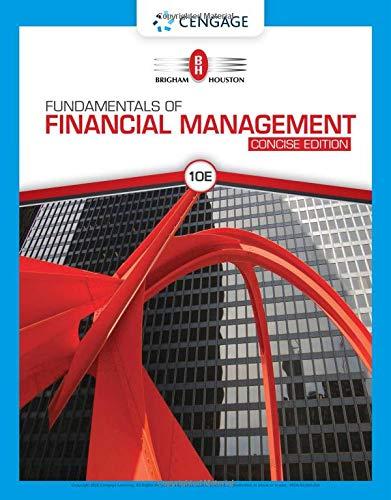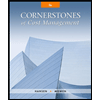Assume you have been hired to evaluate an investment required by EPA for a waste managment system for a nearby hog operation. The system will cost $350,000 and will last 30 years but only depreciated for 10 years. Assuming straight line depreciation, the salvage value is zero for depreciation. The actual expected terminal value is $50,000 which will be received in 30 years time. The system has a $3,250 annual maintenance cost. The marginal tax rate is 28% and the after-tax cost capital is 8.25%. The production of hog will require feed at $23,000 per year and the operation will produce $60,000 in income each year. Prepare a net present cost budget for the capital investment. All answers should be rounded to two places to the right of the decimal. Item Pre-Tax Flow After-Tax Flow Years Discount Rate PV Factor Present Value Waste System -350,000 -$350,000 0 0.0825 1.00 Depr Shield 1-10 0.0825 Terminal Value 30 0.0825 Maintenance Cost 1-30 0.0825 NPV NPC Using the information in the previous question regarding the $350,000 investment, what is the capital recovery factor? Round your answer to two places to the right of the decimal. What is the annualized capital recovery cost in the pre-tax terms for this $300,000 investment? Once again using the $350,000 investment, finalize the NPV and annual budget for this problem in the space below. All answers should be rounded to two places to the right of the decimal. Hint: The first blank in the capital line is the NPV from the first part of this table. Once again using the $300,000 investment, finalize the NPV and annual budget for this problem in the space below. All answers should be rounded to two places to the right of the decimal. Hint: The first blank in the capital line is the NPV from the first part of this table. Item Pre-Tax Amount After-Tax Amount Time Discount Rate PV Factor Present Value Annual After Tax Annual Pre Tax Revenue 1-30 0.0825 Feed 1-30 0.0825 Captial 0.0825 NPV Based on your calculations in the past few problems regarding the $350,000 investment, how would you describe the investment opportunity? Profitable or unprofitable
Assume you have been hired to evaluate an investment required by EPA for a waste managment system for a nearby hog operation. The system will cost $350,000 and will last 30 years but only
| Item | Pre-Tax Flow | After-Tax Flow | Years | Discount Rate | PV Factor | Present Value |
| Waste System | -350,000 | -$350,000 | 0 | 0.0825 | 1.00 | |
| Depr Shield | 1-10 | 0.0825 | ||||
| Terminal Value | 30 | 0.0825 | ||||
| Maintenance Cost | 1-30 | 0.0825 | ||||
| NPV | ||||||
| NPC | ||||||
Using the information in the previous question regarding the $350,000 investment, what is the capital recovery factor? Round your answer to two places to the right of the decimal.
What is the annualized capital recovery cost in the pre-tax terms for this $300,000 investment?
Once again using the $350,000 investment, finalize the NPV and annual budget for this problem in the space below.
All answers should be rounded to two places to the right of the decimal.
Hint: The first blank in the capital line is the NPV from the first part of this table.
Once again using the $300,000 investment, finalize the NPV and annual budget for this problem in the space below.
All answers should be rounded to two places to the right of the decimal.
Hint: The first blank in the capital line is the NPV from the first part of this table.
| Item | Pre-Tax Amount | After-Tax Amount | Time | Discount Rate | PV Factor | Present Value | Annual After Tax | Annual Pre Tax |
| Revenue | 1-30 | 0.0825 | ||||||
| Feed | 1-30 | 0.0825 | ||||||
| Captial | 0.0825 | |||||||
| NPV |
Based on your calculations in the past few problems regarding the $350,000 investment, how would you describe the investment opportunity? Profitable or unprofitable
Trending now
This is a popular solution!
Step by step
Solved in 3 steps with 3 images









